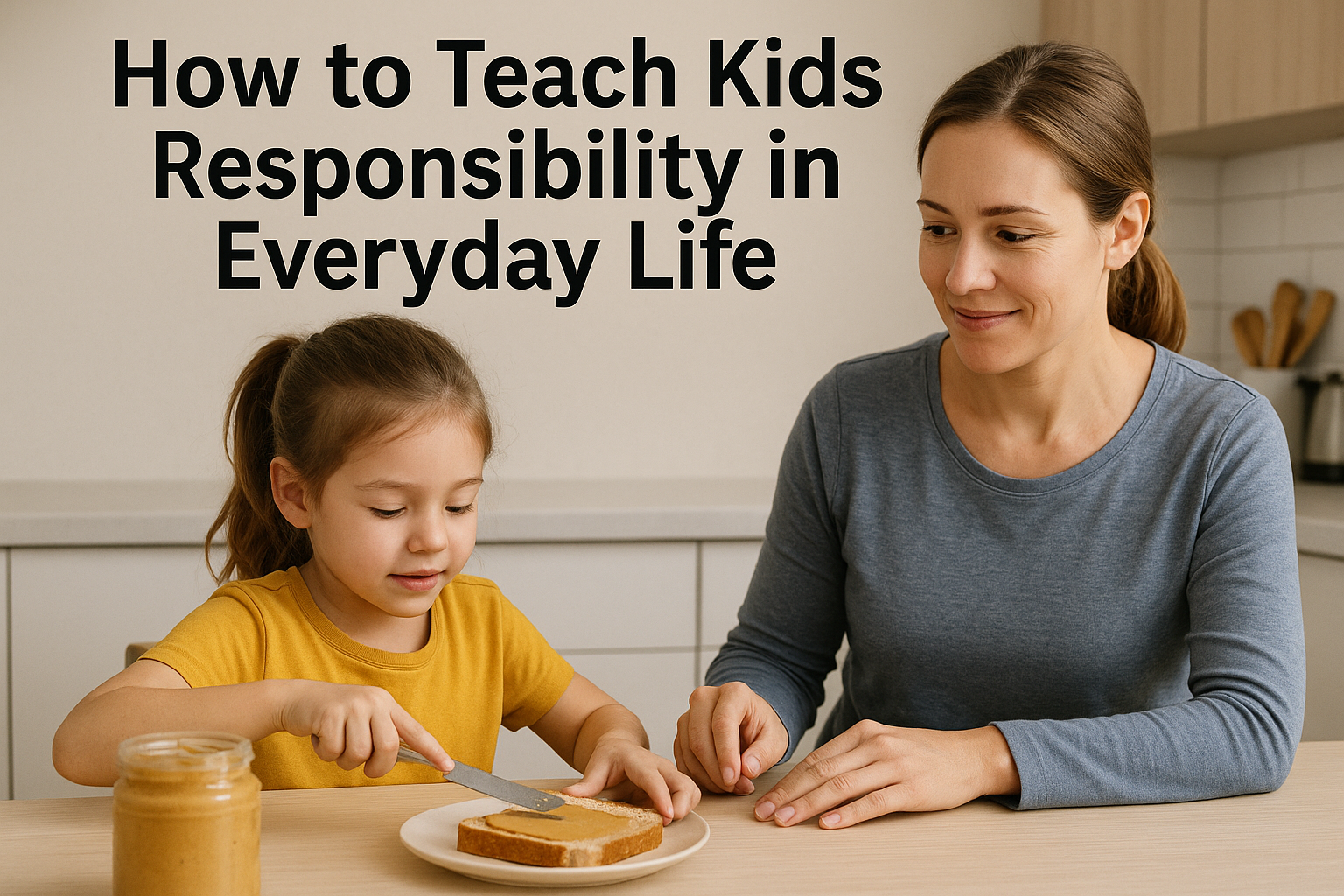Teaching responsibility isn’t just about chores or following rules—it’s about helping children become capable, confident, and independent. When kids learn to take responsibility for their actions, choices, and commitments, they develop skills that will serve them throughout life.
And the best part? You don’t need complex systems or harsh discipline. With small, consistent actions and encouragement, you can raise a child who takes pride in doing the right thing.
What Is Responsibility?
Responsibility means:
- Taking ownership of one’s actions
- Following through on tasks
- Being dependable
- Accepting consequences, both good and bad
- Contributing to the family or community
For children, responsibility starts small—cleaning up toys, feeding a pet, brushing their teeth—and grows as they mature.
Why It’s Important to Teach Responsibility Early
Children who are given age-appropriate responsibility:
- Feel more capable and trusted
- Develop problem-solving and decision-making skills
- Gain confidence and self-discipline
- Are more prepared for school, relationships, and future jobs
- Learn the value of effort and follow-through
Responsibility is a skill that grows with practice—not something that appears overnight.
1. Be a Role Model
Children learn what they live. The way you handle your own responsibilities speaks louder than any lecture.
Model responsible behavior by:
- Keeping your promises
- Owning your mistakes
- Following through on commitments
- Showing pride in your work
Let them see you doing things like paying bills, finishing tasks, or helping others—then explain why those actions matter.
2. Start With Small Tasks
Don’t wait until your child is older to introduce responsibility. Start as early as possible with simple, age-appropriate tasks.
Ideas by Age:
- Toddlers (2–3): Put toys in a bin, throw trash away
- Preschoolers (4–5): Dress themselves, set the table
- Early school age (6–8): Pack their own backpack, feed pets, make the bed
- Tweens (9–12): Do laundry, help cook meals, manage homework
- Teens (13+): Manage their schedule, budget allowance, babysit younger siblings
Make it fun. Use checklists or routines to help them remember.
3. Give Clear Expectations
Children can’t be responsible for something they don’t understand.
Be specific and clear:
- Instead of: “Clean your room.”
- Say: “Please put your books on the shelf, toys in the bin, and clothes in the hamper.”
Avoid vague instructions or assuming they know what to do. When expectations are clear, kids are more likely to succeed.
4. Let Them Make Choices (and Learn From Them)
Responsibility is tied to decision-making. Allow your child to make choices—within safe, reasonable limits.
Examples:
- Let them choose their outfit
- Decide when to do homework (before or after a snack)
- Manage part of their allowance
When choices come with natural consequences (like forgetting homework), let them experience those moments—with your support, not shame.
5. Use Encouragement, Not Rewards
While rewards can be helpful short-term, long-term responsibility comes from intrinsic motivation.
Focus on encouragement:
- “You did that all by yourself—great job!”
- “I see how hard you’re working.”
- “You remembered without me asking—that’s responsibility!”
This builds self-esteem and pride in their own efforts.
6. Be Patient and Consistent
Kids won’t always follow through. They’ll forget. They’ll resist. That’s normal.
Stay consistent:
- Remind calmly
- Offer support
- Re-teach when needed
- Praise progress, not perfection
Over time, consistency teaches that responsibility is a regular part of life—not something to avoid or dread.
7. Avoid Doing Everything for Them
It’s often faster and easier to just do it yourself. But doing everything for your child robs them of the chance to grow.
Ask yourself:
- “Can they do this with a little help?”
- “Will they learn something if I let them try first?”
- “Is this about my convenience or their growth?”
Give them the time and space to practice—even if it’s messy or slow.
8. Connect Responsibility to Family Contribution
Children are more motivated when they feel their actions matter.
Instead of “You have to feed the dog,” try:
- “Thank you for helping take care of our pet. He depends on you.”
- “You’re part of this family, and your help keeps everything running smoothly.”
Emphasize teamwork and shared responsibility.
9. Let Them Make Amends
When your child makes a mistake, avoid harsh punishment. Instead, guide them toward repair.
Examples:
- If they hurt someone’s feelings → write a note or apologize
- If they break something → help fix or clean it
- If they forget a task → come up with a plan to remember next time
Learning how to make things right is a powerful life skill.
10. Celebrate Growth
Responsibility takes time. Celebrate your child’s progress along the way:
- “Remember when you couldn’t do this? Now you can!”
- “You really stuck with that even though it was tough.”
- “Look at how much you’ve learned!”
Reinforce that responsibility isn’t about being perfect—it’s about trying, learning, and growing.
Responsibility Builds Resilience and Confidence
Teaching kids responsibility is about so much more than getting chores done. It’s about helping them believe in themselves, care for others, and take ownership of their actions.
With patience, trust, and guidance, you’re not just raising a responsible child—you’re raising a strong, capable, compassionate person ready to take on the world.
And that’s a gift that lasts a lifetime.
